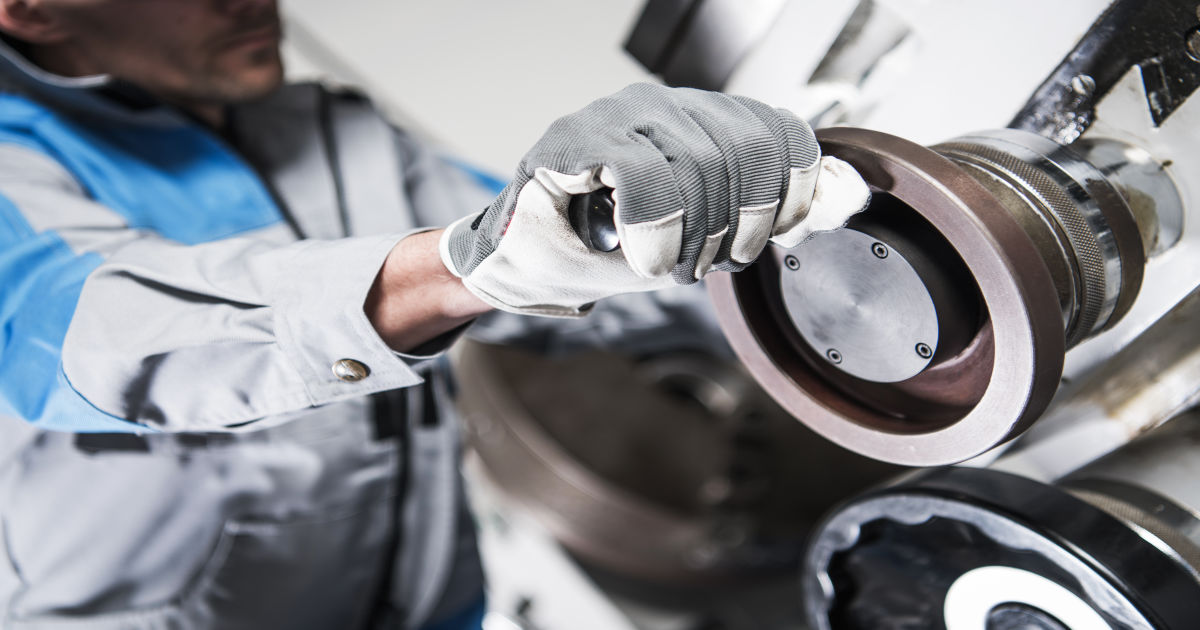Metal fatigue refers to the structural damage that occurs to material when subjected to cyclic loading. In this condition, the applied stress is repeated in a fluctuating manner. This leads to the growth of cracks, potentially culminating in sudden failure without prior large-scale deformation or obvious deterioration.
The relevance of metal fatigue in engineering traces back to the 19th century, closely linked to catastrophic failures in railway structures and the burgeoning field of aeronautics. It has since become a concern in design and maintenance protocols across various industries.
The Science Behind Metal Fatigue
Material Behavior Under Cyclic Stress
Under cyclic stress, materials exhibit markedly different behavior from static loading. Metals subjected to repeated loading can fail at stress levels significantly lower than their tensile strength. This fatigue process involves crack initiation, followed by crack propagation with each load cycle. This can lead to a sudden fracture even though the applied stresses are lower.
The Process of Crack Initiation and Propagation
Crack initiation in metal fatigue typically originates at stress concentration points. These imperfections serve as focal points for stress. The localized stress exceeds the metal’s endurance limit, leading to the formation of small cracks. Over time, these cracks propagate through the material due to the continued application of cyclic stress. It eventually results in macroscopic failure.
Factors That Influence Fatigue Life
- Material Properties
Material properties, such as the composition, microstructure, and hardness of a metal, are pivotal in determining its fatigue life. Different materials respond to cyclic loading in various ways. Some can endure more cycles before failure due to their intrinsic properties like elasticity and tensile strength.
- Surface Finish
The surface finish of metal significantly affects its susceptibility to fatigue; smoother finishes reduce the likelihood of crack initiation. Rough or irregular surfaces can act as stress concentrators, making them more prone to the initiation of fatigue cracks.
- Environmental Conditions
Environmental conditions, including temperature, humidity, and corrosive atmospheres, can accelerate the fatigue process. Corrosion can lead to pitting and intergranular attacks, compromising the metal’s surface integrity. It thereby reduces its fatigue life.
- Geometric Features of Components
The geometric features of components can significantly influence fatigue life by creating stress risers. These features alter the local stress distribution and can amplify the stress experienced by the material during cyclic loading.

Detection and Measurement of Metal Fatigue
Non-destructive Testing (NDT) Techniques
Non-destructive testing (NDT) techniques are essential for identifying metal fatigue without damaging the component under inspection. Methods like ultrasonic testing, magnetic particle inspection, and dye penetrant inspection detect surface and subsurface cracks indicative of fatigue.
Predictive Modeling and Fatigue Life Calculation
Predictive modeling and fatigue life calculations involve computer simulations and mathematical models to predict when and where fatigue may occur. This approach allows engineers to estimate the lifespan of a component under various loading conditions by understanding the stress distribution and the material’s response to it.
Monitoring Systems in Practice
Monitoring systems in practice include strain gauges and acoustic emission sensors, which actively track changes in material properties that signal the onset of fatigue. These systems provide real-time data, enabling the timely maintenance and prevention of potential failures due to metal fatigue.
Forms of Material Fatigue Failure
Thermal Fatigue Failure
Thermal fatigue failure occurs due to repetitive temperature variations that induce expansion and contraction in the material, creating stress cycles that can lead to cracking and eventual failure, particularly in environments with extreme or fluctuating temperatures.
Corrosion Fatigue Failure
Corrosion fatigue failure happens when a corrosive environment acts synergistically with cyclic stress to cause premature cracking in metals, as the corrosion process weakens the material’s surface and exacerbates the propagation of fatigue cracks.
Vibration Fatigue Failure
Vibration fatigue failure is attributed to oscillatory forces that can induce fluctuating stresses in components, leading to fatigue damage, especially when the frequency of the vibrations resonates with the material’s natural frequency.
Mechanical Failure
Mechanical failure from cumulative stresses arises over time as repeated loading causes microstructural damage and crack growth, eventually surpassing the material’s ability to withstand the applied stresses, culminating in a fracture.

Design Considerations for Metal Fatigue
Testing and Plotting Data Points
Determining fatigue strength through testing involves subjecting a material to cyclic stresses and recording the number of cycles it endures before failure. These results are plotted to produce an S-N curve, which characterizes the fatigue strength of the material across a range of stress levels.
Software Fatigue Analysis
Software fatigue analysis utilizes advanced programs to simulate cyclic loading and identify potential stress concentrations in a design, allowing engineers to optimize the geometry and reduce the risk of fatigue failure before the component is manufactured.
Material Selection
Material selection for improved resistance to fatigue requires an understanding of different materials’ behavior under cyclic stress. Engineers choose metals with higher fatigue limits and better endurance properties for applications where fatigue is a significant concern.
Real-World Implications
- Aviation incidents have often been attributed to metal fatigue, where even minor cracks in critical components can lead to catastrophic outcomes.
- Structural failures in buildings and bridges are sometimes caused by fatigue, which can result in the gradual degradation of structural integrity.
- In the automotive industry, component longevity is closely tied to fatigue resistance, as parts like suspensions and chassis are subject to repetitive stress cycles.
- The economic and safety considerations of metal fatigue are paramount. The cost of premature failures can be substantial, leading to financial loss and significant safety hazards. Thus, industries invest heavily in fatigue management through rigorous testing, monitoring, and maintenance programs to mitigate risks.

Mitigation Strategies
Design Considerations
Design considerations to prevent fatigue include integrating features that distribute stress more evenly across components, like adding fillets to corners and avoiding sharp changes in cross-section that can serve as stress concentrators.
Material Selection and Treatment
Material selection and treatment are critical in mitigating fatigue; choosing alloys designed for high fatigue resistance or treating surfaces through shot peening can significantly enhance fatigue life.
Maintenance and Inspection Protocols
Maintenance and inspection protocols are designed to detect early signs of fatigue. They utilize regular check-ups and non-destructive testing methods to catch and repair minor cracks before they lead to failure.
Future Perspectives
Advances in Materials Engineering
Advances in materials engineering are continually enhancing the fatigue resistance of metals, with research focused on developing new alloys and composite materials that offer superior performance under cyclic loading conditions.
Innovative Design Approaches
Innovative design approaches employ cutting-edge computational tools and finite element analysis to optimize structures, significantly reducing the potential for fatigue failure by predicting stress points and material behavior under operational conditions.
Predictive Maintenance and Smart Materials
Predictive maintenance and smart materials represent a transformative shift in fatigue management. Materials with embedded sensors can monitor their health, while predictive algorithms analyze data to forecast when maintenance should be performed to prevent fatigue-related failures.
Challenges and Controversies
Balancing Cost and Safety
Balancing cost and safety is a delicate exercise; ensuring component longevity and integrity often requires investment in high-quality materials and design, which can escalate costs, challenging industries to find a cost-effective yet safe equilibrium.
The Role of Regulation and Standards
Regulation and standards play a role in dictating the minimum safety requirements to mitigate metal fatigue, often leading to debates on whether these measures stifle innovation or should be more stringent.
Ethical Considerations in Risk Management
Ethical considerations in risk management are paramount when determining acceptable risk levels, with the imperative to protect human life sometimes conflicting with commercial pressures and resource limitations.
Embracing the Challenge of Metal Fatigue
In the relentless interplay between metal and stress, metal fatigue emerges as a silent adversary, one that demands a meticulous approach to material selection, design, and maintenance. The journey from understanding its scientific underpinnings to implementing real-world solutions illustrates the importance of vigilance in engineering practices. As the narrative of metal fatigue unfolds, its significance remains undiminished. It compels industries to harness advancements in technology and materials science to mitigate risks. This ensures safety and functionality in an ever-evolving technological landscape.

Frequently Asked Questions
Can Metal Fatigue Be Completely Eliminated in Materials?
Metal fatigue cannot be eliminated, but its effects can be significantly reduced through careful design, material selection, and maintenance strategies.
How Long Does It Take for Metal Fatigue to Cause Failure?
The time it takes for metal fatigue to lead to failure varies greatly and depends on material properties, stress levels, environmental conditions, and component design.
Are There Any Materials Immune to Metal Fatigue?
No material is entirely immune to metal fatigue, but some, like certain metal alloys and composites, are more resistant than others.
Does the Size of a Component Affect Its Fatigue Life?
Yes, the size and shape of a component can affect its fatigue life, as larger sections may have more imperfections and stress concentrations that can initiate fatigue.
Can Metal Fatigue be Predicted in the Design Phase?
While it cannot be predicted with absolute certainty, advanced modeling and simulation can give a good estimation of a component’s fatigue life.
Further Readings
Recent advances on notch effects in metal fatigue: A review
Recent Advances in Very High Cycle Fatigue Behavior of Metals and Alloys
Fatigue database of complex metallic alloys

